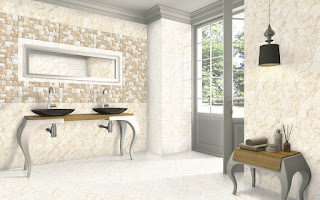Your Guide To Different Types of TMT Bars and Their Uses in Construction
A good understanding of the different grades of TMT bars is very important while sourcing the right TMT bars for your project. Different projects may call for different types of TMT bars, depending on the compositional strength, dimensions, and features they offer. For example, a Fe415 differs significantly from a Fe500 not only in yield strength & composition but also in utilization and on-site application.
Types of TMT bars and their uses
Procurement managers can map out core requirements and source the right TMT type with the key properties necessary for long-term reinforcement. There are 4 main grades that most TMT bars fall under, namely Fe 415, 500, 550, & 600, making it easier for buyers when sourcing the right TMT bar.
Procurement managers can also review any additional information provided such as superior corrosion resistance, seismic resistance, bendability, etc. when analyzing the types of TMT bars available. Listed below are the different TMT grades available and what construction projects they’re used for extensively.
Fe 415 grade
Fe 415 TMT is a highly cost-effective and ductile reinforcement bar that is manufactured for small-scale construction projects. It can be easily bent into the most complex shapes, making it perfect for small-load constructions.
Chemical composition (% max)
Carbon – 0.30
Sulphur – 0.06
Phosphorous – 0.06
S+P – 0.110
Mechanical properties
Minimum Yield Strength – 415 N/sq.mm
Ultimate Tensile Strength – 485N/sq.mm
Elongation (%) – 14.5
Ration (UTS/YS) – ≥ 1.10
Use in construction
Fe415 is used for reinforcing residential homes, houses, and small-scale structures. They have high uniform elongation and can be used to develop projects in earthquake-prone regions. Construction firms may also opt for Fe415S or Fe415D if they require additional seismic stability or ductility.
Fe 500 grade
The Fe500 grade is generally regarded as a market-standard across many construction projects. Its alternatives, Fe 500D and Fe 500S are also popular choices that offer greater seismic stability and ductility.
Chemical composition (% max)
Carbon – 0.30
Sulphur- 0.055
Phosphorous – 0.055
S+P – 0.105
Mechanical properties
Minimum Yield Strength – 500 N/sq.mm
Ultimate Tensile Strength – 545N/sq.mm
Elongation (%) – 12
Ration (UTS/YS) – ≥ 1.08
Use in construction
Fe 500 bars can be used across a range of residential, commercial, and multi-story projects. They offer greater tensile strength than Fe 415 and are specially manufactured to provide stability to high-rise projects while resisting load better.
Additionally, Fe 500D bars offer greater ductility, making them perfect for construction in areas with high seismic activity and sudden loads. They have a superior minimum percentage elongation of 16%, compared to that of Fe 500’s at a standard 12%.
Fe 550 grade
Fe 550 grade bars have greater tensile strength and can be used across a range of large-scale projects.
Chemical composition (% max)
Carbon – 0.30
Sulphur – 0.055
Phosphorous – 0.050
S+P – 0.100
Mechanical properties
Minimum Yield Strength – 550 N/sq.mm
Ultimate Tensile Strength – 585N/sq.mm
Elongation (%) – 10
Ration (UTS/YS)- ≥ 1.06
Use in construction
Construction procurement managers can source Fe 550 grade TMT when developing industrial and large-format infrastructure projects. Bridges, industrial projects, and structures requiring high load-bearing capacities can leverage Fe 550 grade TMT. They’re especially impactful in coastal, marine, and underground environments as well.
Fe 600 grade
Fe 600 is one of the strongest TMT grades that construction firms can acquire while developing heavy-duty infrastructure projects, bridges, marine facilities, etc. They offer greater tensile strength, reduce overall consumption, and ensure lesser steel congestion within the reinforcement.
Chemical composition (% max)
Carbon – 0.30
Sulphur- 0.04
Phosphorous – 0.04
S+P – 0.075
Mechanical properties
Minimum Yield Strength – 600 N/sq.mm
Ultimate Tensile Strength – 660N/sq.mm
Elongation (%) – 10
Ration (UTS/YS)- ≥ 1.06
Use in construction
Fe 600 may be used in the construction of expressways, metro projects, plants, towers, commercial properties, and industrial zones. They’re used extensively when large-scale projects need to be developed keeping load-bearing, durability, and corrosion resistance in mind.
In Conclusion
Online procurement platforms such as Meenakshi Build World help connect buyers with a variety of TMT bar brands while outlining unique features that make them the right fit. Procurement managers can sort through various grades, dimensions, and benefits to source from the best supplier for their requirements.Our brands are Indus tmt steel,Kamdhenu steel,tata steel,and Gopala steel.



Comments
Post a Comment